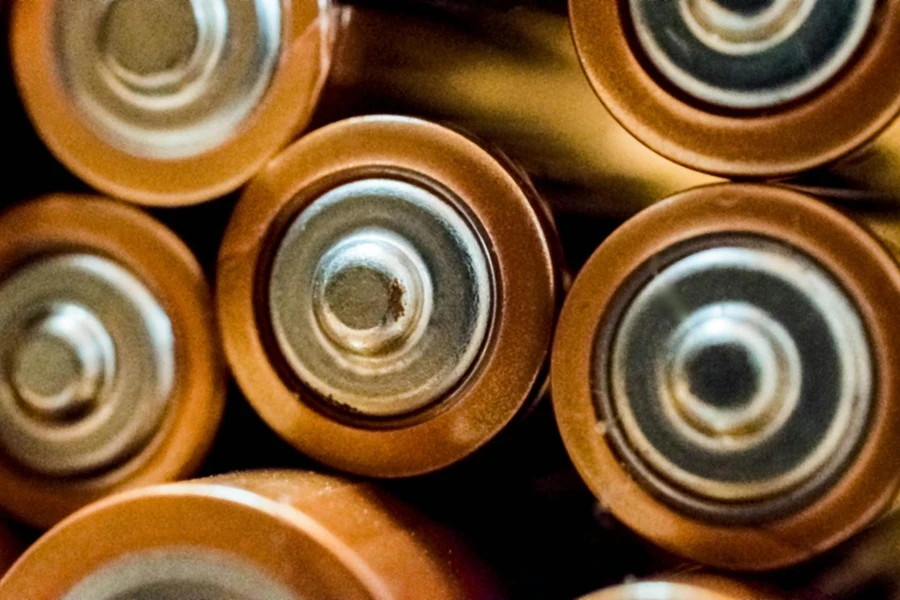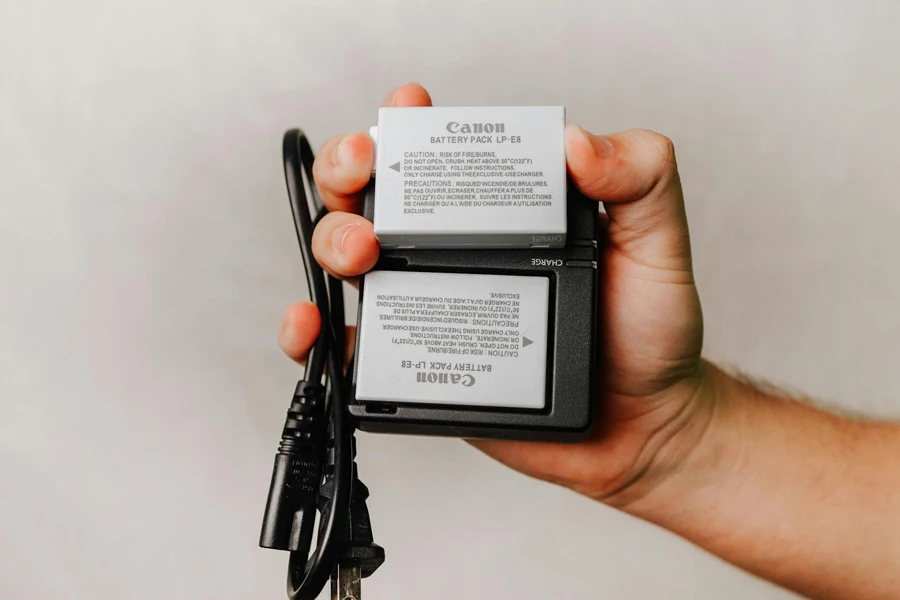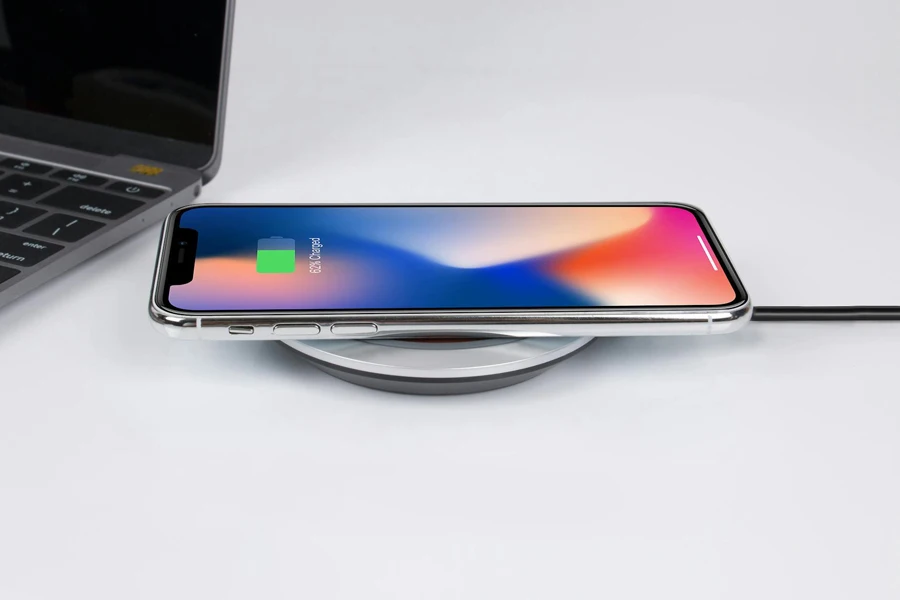Table of Contents
● Introduction
● Market overview
● Key technology and design innovations
● Top-selling models driving market trends
● Conclusion
Introduction
Chargers, batteries, and power supplies are the backbone of modern consumer electronics, ensuring devices stay powered and functional. These components are essential for seamlessly operating everything from smartphones and laptops to electric vehicles and industrial machinery. The demand for more efficient, reliable, and innovative power solutions grows as technology advances. Faster charging technologies, such as quick and wireless charging, are revolutionising how we power our gadgets, providing greater convenience and efficiency. Advances in battery design, like high-capacity lithium-ion and emerging solid-state batteries, meet the demands of today’s energy-hungry devices with improved energy storage and safety features. Modern power supplies are becoming more compact, energy-efficient, and adaptable, integrating smart technologies for better power management and distribution, enhancing device performance, and contributing to sustainability. The evolution of these power solutions is driven by the need for energy efficiency, sustainability, and convenience, making them increasingly integral to our daily lives. This article explores the current market landscape, key technological innovations, and top-selling models shaping the future of power solutions.

Market overview
The global chargers, batteries, and power supply market is experiencing significant growth driven by the increasing demand for portable electronic devices, electric vehicles, and renewable energy systems. According to Business Research Insights, the battery charger market is expected to exhibit a robust Compound Annual Growth Rate (CAGR) of 7.54% from 2022 to 2028. This growth is fueled by technological advancements that enhance the efficiency and reliability of these power solutions. Innovations in fast-charging technologies, wireless charging, and smart power management systems are meeting the rising energy demands of modern devices. Furthermore, the push towards sustainable energy solutions and stringent regulations to reduce electronic waste are accelerating the adoption of advanced battery technologies and efficient power supplies. The market is also witnessing a surge in the development of high-capacity, long-lasting batteries, particularly lithium-ion and emerging solid-state batteries, which are essential for the performance of today’s energy-intensive devices.
Market shares within the charger, battery, and power supply sectors are dominated by several leading companies, driven by their extensive product portfolios and continuous technological innovations. According to Business Research Insights, the battery charger market alone was valued at USD 23.361 billion in 2022 and is projected to reach USD 36.133 billion by 2028. This substantial growth highlights the market’s dynamic nature, with companies striving to develop cutting-edge solutions that offer faster charging times, enhanced safety features, and improved energy densities. Key trends influencing the market include the miniaturisation of chargers, the rise of wireless charging technologies, and the integration of smart features into power supplies. Consumer preferences shift towards sustainable and eco-friendly products, prompting manufacturers to focus on green technologies and recyclable materials. Regulatory frameworks promoting renewable energy use and reducing carbon footprints also shape market trends. These developments indicate a significant shift towards innovations that support sustainability while meeting the high performance and reliability standards expected by consumers and industrial users alike.

Key technology and design innovations
Advancements in battery technology
Lithium-ion batteries
Lithium-ion batteries have become the standard in consumer electronics due to their high energy density and long cycle life. These batteries are widely used in smartphones, laptops, and electric vehicles. According to RS Components, lithium-ion batteries are preferred because they offer quick charging and consistent power output throughout their lifetime. This makes them ideal for high-drain applications. Additionally, advancements in battery management systems (BMS) enhance lithium-ion batteries’ safety, efficiency, and longevity by preventing overcharging, overheating and ensuring balanced cell charging.
Solid-state batteries
Solid-state batteries represent a significant leap in battery technology. Unlike conventional lithium-ion batteries that use liquid electrolytes, solid-state batteries employ solid electrolytes, which offer higher energy densities and improved safety. These batteries are less prone to leakage and thermal runaway, making them a safer alternative for high-capacity energy storage. According to industry sources, solid-state batteries are expected to play a crucial role in the future of electric vehicles and portable electronics, offering longer lifespans and faster charging times.
Emerging alternatives
New battery chemistries are being explored to address the limitations of current technologies. For instance, lithium-sulphur batteries promise higher energy densities and lower costs than lithium-ion batteries. Sodium-ion batteries are another emerging technology offering a more abundant and cost-effective alternative to lithium-based batteries. These innovations are driven by the need for sustainable, high-performance energy storage solutions to meet various applications’ growing demands.
Innovations in charging technology
Fast charging technologies
The demand for rapid charging solutions has led to significant advancements in fast charging technologies. According to industry reports, fast chargers can significantly reduce charging times by increasing the power delivery to the battery. This is achieved through advanced power electronics and optimised charging protocols that safely manage the high power levels required for fast charging. These technologies are becoming standard in smartphones, electric vehicles, and other high-capacity devices, providing users with the convenience of shorter charging times.
Wireless charging
Wireless charging technology has evolved significantly, offering a cable-free solution to power electronic devices. Inductive charging, the most common wireless charging, uses electromagnetic fields to transfer energy between the charger and the device. Due to its convenience and ease of use, this technology is becoming increasingly popular in consumer electronics, such as smartphones and smartwatches. Recent advancements have improved wireless chargers’ efficiency and power transfer rates, making them a viable alternative to traditional wired chargers.

Bidirectional charging
Bidirectional charging, or vehicle-to-grid (V2G) technology, allows electric vehicles to return excess energy to the grid or power homes and other devices. This innovation transforms electric vehicles into mobile energy storage units, contributing to grid stability and backup power during outages. According to industry insights, bidirectional charging is gaining traction as it supports the integration of renewable energy sources and enhances the overall energy efficiency of the power grid.
Power supply design improvements
Efficiency enhancements
Modern power supplies are designed with a strong emphasis on efficiency. High-efficiency power supplies minimise energy losses during conversion, reducing heat generation and improving overall performance. According to scientific literature, advancements in power electronics, such as the development of gallium nitride (GaN) and silicon carbide (SiC) semiconductors, have led to significant improvements in the efficiency and compactness of power supplies. These materials offer higher switching speeds and lower power losses than traditional silicon-based components.
Compact and lightweight designs
The trend towards miniaturisation in electronics has driven the development of smaller, lighter power supplies. These compact designs are crucial for portable devices, where space and weight are premium. Innovations in circuit design and thermal management have enabled the creation of power supplies that deliver high performance in a reduced form factor. This is particularly important for wearable devices, drones, and other portable electronics applications.
Integration with smart technologies
Integrating smart technologies into power supplies enhances their functionality and user experience. Smart power supplies can monitor and adjust their output in real time to optimise performance and protect connected devices. Features such as remote monitoring, automatic fault detection, and energy usage tracking are becoming standard in modern power supplies. These capabilities are essential for applications that require high reliability and precision, such as industrial automation and medical equipment.
Advanced cooling solutions
Efficient thermal management is critical for the reliability and longevity of power supplies. To manage heat dissipation effectively, advanced cooling solutions, such as liquid cooling and advanced heat sinks, are being integrated into high-performance power supplies. These innovations allow power supplies to operate at higher power levels without overheating, ensuring stable and reliable performance even in demanding environments.
Modular power supplies
Modular power supplies offer flexibility and scalability, allowing users to customise their power solutions to meet specific needs. These power supplies consist of interchangeable modules that can be easily added or removed to adjust the power output. This modular approach is particularly beneficial in industrial and data centre applications, where power requirements vary significantly. Modular designs simplify maintenance and upgrades, reducing downtime and improving system efficiency.
Energy harvesting technologies
Energy harvesting technologies are emerging to power small, low-energy devices using ambient energy sources. These technologies convert energy from light, heat, and vibrations into electrical power. Energy harvesting is particularly useful for wireless sensors and IoT devices, where traditional power sources may be impractical. Advances in materials and energy conversion techniques enhance the efficiency and feasibility of energy harvesting solutions, contributing to the development of self-sustaining electronic systems.
Top-selling models driving market trends
Leading battery models
Lithium-ion batteries
Lithium-ion batteries are among the top-performing battery models on the market, known for their high energy density and long cycle life. According to RS Components, these batteries are widely used in various consumer electronics, including smartphones, laptops, and electric vehicles, due to their consistent power output and quick charging capabilities. The advancements in lithium-ion technology have also led to the development of higher capacity and more compact battery designs, making them a preferred choice for high-drain applications.
Solid-state batteries
Solid-state batteries are gaining traction due to their enhanced safety features and higher energy densities. These batteries replace the liquid electrolyte found in traditional lithium-ion batteries with a solid electrolyte, reducing the risk of leakage and thermal runaway. As noted in industry analyses, solid-state batteries are expected to play a significant role in the future of energy storage, particularly for electric vehicles and portable electronics. Their ability to offer longer lifespans and faster charging times positions them as a strong contender in the market.
Nickel-metal hydride (NiMH) batteries
NiMH batteries remain popular in applications where long-term energy storage and repeated cycling are crucial. Although they take longer to charge than lithium-ion batteries, their rechargeability and efficiency make them suitable for devices like digital cameras, remote controls, and various household electronics. According to RS Components, advancements in NiMH technology have improved their capacity and lifespan, maintaining their relevance in the market.
Popular chargers
Fast chargers
Fast chargers are at the forefront of charging technology, significantly reducing the time required to charge electronic devices. According to industry reports, these chargers utilise advanced power delivery mechanisms and optimised charging protocols to deliver higher power levels safely. Fast chargers are particularly popular for smartphones and electric vehicles, where minimising downtime is critical. The ability to charge devices to 50% capacity in minutes is a major selling point for these chargers.
Wireless chargers
Wireless charging technology has become increasingly popular due to its convenience and ease of use. Inductive charging, the most common form, uses electromagnetic fields to transfer energy between the charger and the device without needing physical connectors. This technology is particularly popular in consumer electronics, such as smartphones and smartwatches, as it eliminates the clutter of cables and provides a seamless charging experience. Recent advancements have improved wireless chargers’ efficiency and power transfer rates, making them a viable alternative to traditional wired chargers.
Bidirectional chargers
Bidirectional chargers, or vehicle-to-grid (V2G) chargers, allow electric vehicles to return excess energy to the grid or power homes and other devices. This innovation transforms electric vehicles into mobile energy storage units, contributing to grid stability and backup power during outages. According to various sources, bidirectional charging is gaining traction as it supports the integration of renewable energy sources and enhances the overall energy efficiency of the power grid.
In-demand power supplies
High-efficiency power supplies
High-efficiency power supplies are critical for minimising energy losses during the conversion process. According to scientific literature, advancements in power electronics, such as the development of gallium nitride (GaN) and silicon carbide (SiC) semiconductors, have significantly improved the efficiency and compactness of power supplies. These materials offer higher switching speeds and lower power losses, making high-efficiency power supplies essential for applications that demand reliable and efficient power delivery.
Compact and lightweight power supplies
The trend towards miniaturisation has driven the development of compact and lightweight power supplies, crucial for portable devices with limited space and weight. Innovations in circuit design and thermal management have enabled the creation of power supplies that deliver high performance in a reduced form factor. These advancements are particularly important for wearable devices, drones, and other portable electronics, where efficient power delivery is essential.
Smart power supplies
Smart power supplies incorporate advanced features such as remote monitoring, automatic fault detection, and energy usage tracking, enhancing their functionality and user experience. These power supplies can adjust their output in real time to optimise performance and protect connected devices. According to industry insights, smart power supplies are becoming standard in applications that require high reliability and precision, such as industrial automation and medical equipment.
Advanced cooling solutions
Efficient thermal management is critical for the reliability and longevity of power supplies. To manage heat dissipation effectively, advanced cooling solutions, such as liquid cooling and advanced heat sinks, are being integrated into high-performance power supplies. These innovations allow power supplies to operate at higher power levels without overheating, ensuring stable and reliable performance even in demanding environments.
Modular power supplies
Modular power supplies offer flexibility and scalability, allowing users to customise their power solutions to meet specific needs. These power supplies consist of interchangeable modules that can be easily added or removed to adjust the power output. This modular approach is particularly beneficial in industrial and data centre applications, where power requirements vary significantly. Modular designs simplify maintenance and upgrades, reducing downtime and improving system efficiency.
Energy harvesting power supplies
Energy harvesting technologies convert ambient energy sources, such as light, heat, and vibrations, into electrical power, offering a means to power small, low-energy devices. According to various sources, energy harvesting is particularly useful for wireless sensors and IoT devices, where traditional power sources may be impractical. Advances in materials and energy conversion techniques enhance the efficiency and feasibility of energy harvesting solutions, contributing to the development of self-sustaining electronic systems.
Conclusion
The chargers, batteries, and power supply landscape is rapidly evolving, driven by technological advancements and increasing market demands. The continuous development of high-efficiency, compact, and smart power solutions reflects the growing need for reliable and sustainable energy sources in consumer electronics and industrial applications. Innovations such as fast charging technologies, wireless and bidirectional charging, and advanced battery chemistries like lithium-ion and solid-state batteries are transforming how devices are powered and used. For businesses, staying informed about these latest trends and innovations is crucial for making strategic purchasing and investment decisions. Understanding the market dynamics and technological advancements enables companies to select the most suitable power solutions that meet current operational requirements and support future growth and sustainability goals. As the market evolves, businesses prioritising up-to-date knowledge and adaptability in their power management strategies will be better positioned to leverage these innovations for competitive advantage and operational efficiency.




